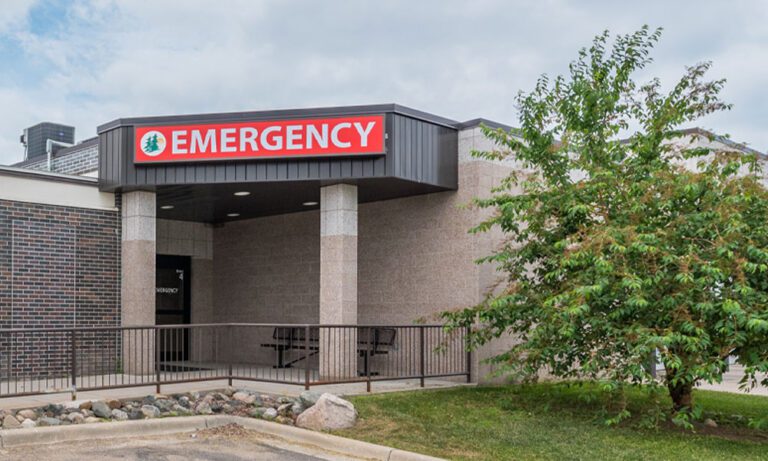At Ely-Bloomenson Community Hospital (EBCH), we’re excited to offer an innovative solution for carpal tunnel syndrome: ultrasound-guided carpal tunnel release surgery. This advanced procedure is designed to provide a faster recovery and precise treatment, catering especially to our active and outdoor-loving community in Ely and the surrounding areas.
Understanding Carpal Tunnel Syndrome
Carpal tunnel syndrome (CTS) is a condition that affects the median nerve in the wrist, leading to pain, numbness, and tingling in the hands and arms. These symptoms can disrupt daily activities, from paddling on our beautiful lakes to hiking through the Superior National Forest. Traditional carpal tunnel treatments often involve a lengthy recovery period, but our new ultrasound-guided technique offers a minimally invasive alternative with potentially quicker results.
What is Ultrasound-Guided Carpal Tunnel Surgery?
Ultrasound-guided carpal tunnel release surgery involves using ultrasound technology to guide the release of the ligament that is compressing the median nerve. This real-time imaging helps the skilled surgeon performing the procedure navigate the area with precision, reducing the risk of injury to nerves or blood vessels. The procedure is performed through a small incision, strategically placed at the end of the forearm rather than directly over the palm.
How Does It Differ from Traditional Surgery?
Traditional open carpal tunnel release surgery requires an incision directly over the palm, which can lead to more extensive tissue damage and longer recovery times. In contrast, the ultrasound-guided method uses a smaller incision at the end of the forearm, aligned with the carpal tunnel. This approach minimizes tissue disruption and can lead to a faster recovery.
Why Choose Ultrasound-Guided Carpal Tunnel Surgery?
Ultrasound-guided carpal tunnel release offers several advantages over traditional methods:
- Smaller Incision: The incision is smaller, which means less tissue damage and a quicker recovery.
- Enhanced Accuracy: Real-time imaging ensures precise ligament release, minimizing risks.
- Faster Recovery: Patients often resume their normal activities sooner compared to traditional surgery.
- Reduced Risk of Complications: The minimally invasive nature results in fewer complications and less postoperative discomfort.
While the results of both ultrasound-guided and traditional surgeries are generally similar, ultrasound-guided surgery may not be suitable for every patient. A thorough evaluation by your surgeon will help determine the best approach for your condition.
Who Is a Candidate for This Procedure?
Ultrasound-guided carpal tunnel release is ideal for patients with moderate to severe carpal tunnel syndrome. This includes those experiencing numbness and tingling in the thumb, index, and middle fingers, pain at night, frequent dropping of items, and weakness, especially if other non-surgical treatments such as braces and rest have not provided relief.
What to Expect During and After the Procedure
During the surgery, a diagnostic ultrasound is performed, followed by the administration of local anesthesia to numb the wrist. A small incision is made at the end of the forearm, and a specially designed tool is used to release the ligament under ultrasound guidance.
The procedure itself takes approximately 15-20 minutes and is performed in a sterile operating room with a dedicated team of nurses and surgical technicians. Patients may experience mild discomfort from the injection of the local anesthetic but should not have significant pain afterward.
Post-surgery, patients are advised to elevate their wrist for 48 hours to reduce swelling, engage in gentle range-of-motion exercises, and avoid lifting anything heavier than one pound until their first postoperative visit. The incision is typically closed with a sterile bandage and an ACE wrap for compression. Once the wound has fully healed, most patients can return to their normal activities as tolerated, though some may experience residual pain in the palm with more strenuous activities, such as push-ups.
Our Experience and How to Get Started
EBCH began performing ultrasound-guided carpal tunnel release surgery earlier in 2024 and we have already seen promising results. To explore this treatment option, patients should first consult their primary care provider, who can initiate non-operative management and refer them for further evaluation and surgery if necessary.
Looking Ahead
We are proud to offer this cutting-edge treatment at Ely-Bloomenson Community Hospital and remain committed to bringing the latest medical advancements to our community. If you or a loved one is struggling with carpal tunnel syndrome and interested in learning more about ultrasound-guided carpal tunnel release, we encourage you to consult with our expert team.
For more information or to schedule a consultation, please visit our surgical services web page or call us directly at 218-365-8724. Let us help you return to the activities you love without the limitations of carpal tunnel syndrome.




